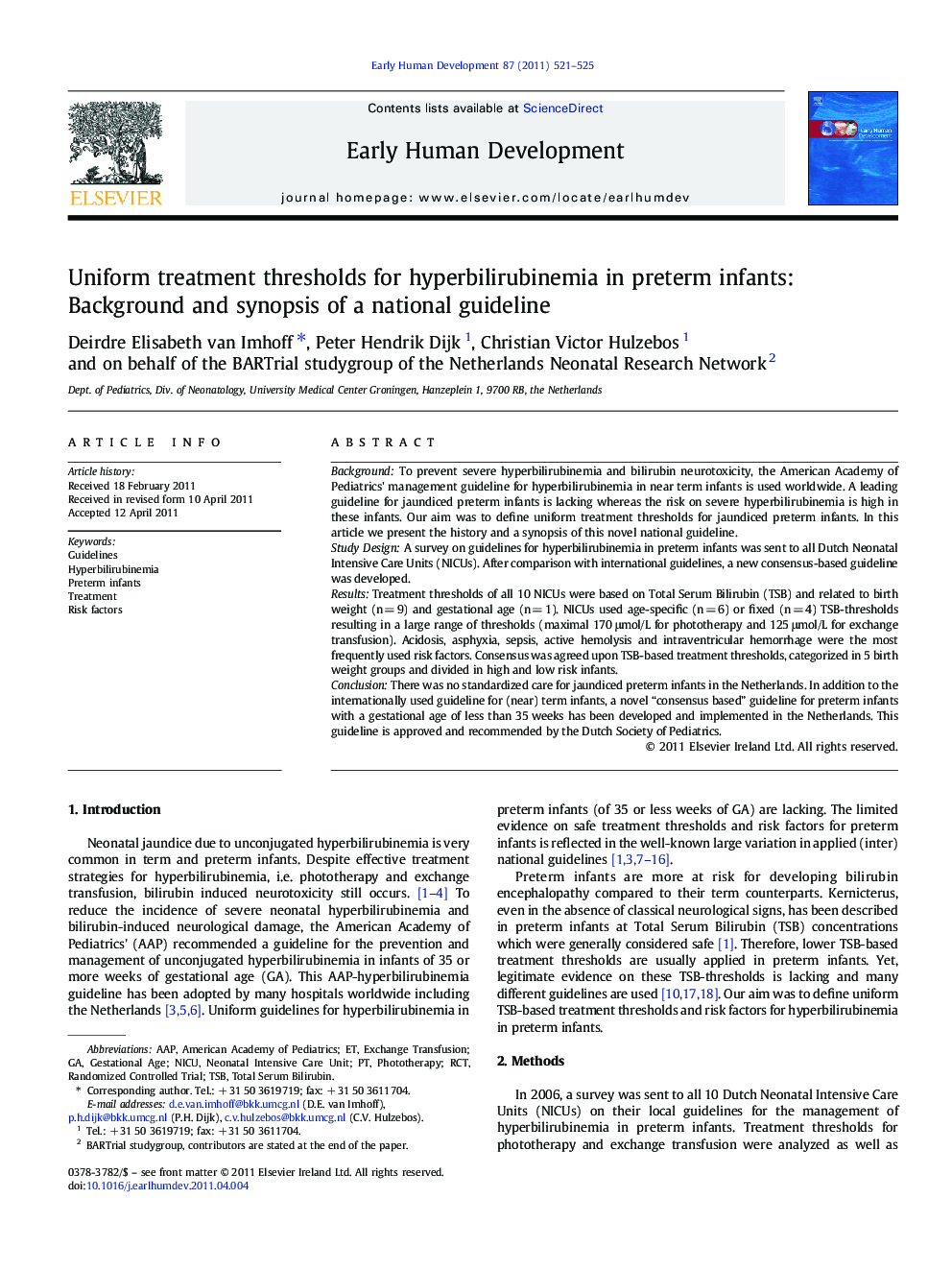| Article ID | Journal | Published Year | Pages | File Type |
|---|---|---|---|---|
| 3917074 | Early Human Development | 2011 | 5 Pages |
BackgroundTo prevent severe hyperbilirubinemia and bilirubin neurotoxicity, the American Academy of Pediatrics' management guideline for hyperbilirubinemia in near term infants is used worldwide. A leading guideline for jaundiced preterm infants is lacking whereas the risk on severe hyperbilirubinemia is high in these infants. Our aim was to define uniform treatment thresholds for jaundiced preterm infants. In this article we present the history and a synopsis of this novel national guideline.Study DesignA survey on guidelines for hyperbilirubinemia in preterm infants was sent to all Dutch Neonatal Intensive Care Units (NICUs). After comparison with international guidelines, a new consensus-based guideline was developed.ResultsTreatment thresholds of all 10 NICUs were based on Total Serum Bilirubin (TSB) and related to birth weight (n = 9) and gestational age (n = 1). NICUs used age-specific (n = 6) or fixed (n = 4) TSB-thresholds resulting in a large range of thresholds (maximal 170 μmol/L for phototherapy and 125 μmol/L for exchange transfusion). Acidosis, asphyxia, sepsis, active hemolysis and intraventricular hemorrhage were the most frequently used risk factors. Consensus was agreed upon TSB-based treatment thresholds, categorized in 5 birth weight groups and divided in high and low risk infants.ConclusionThere was no standardized care for jaundiced preterm infants in the Netherlands. In addition to the internationally used guideline for (near) term infants, a novel “consensus based” guideline for preterm infants with a gestational age of less than 35 weeks has been developed and implemented in the Netherlands. This guideline is approved and recommended by the Dutch Society of Pediatrics.
